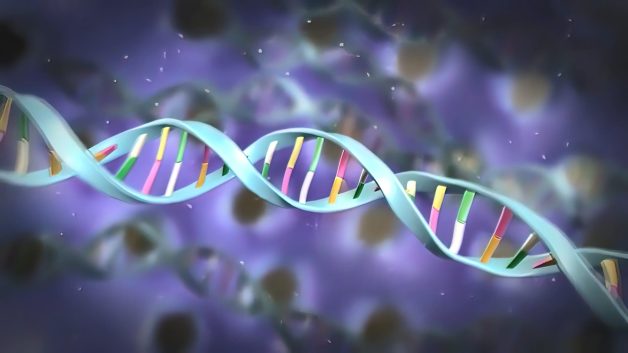First Of A Three-Part Series
By John Riley. Originally printed in 2002 and reposted with permission from Crime, Justice and America magazine.
DNA first became known to the world at large as a means of near-certain identification in 1985, when it was used to identify the skeletal remains of Josef Mengele, the Auschwitz camp doctor….
Fifteen years ago the three initials were rarely spoken outside of a laboratory, or a classroom where students of science were pondering the potential of genetics and genetic engineering. Today, DNA (deoxyribonucleic acid) is frequently the star witness in courtrooms around the world — used by prosecutors and defense attorneys to help prove or disprove the guilt or innocence of defendants.
Raising The Dead
DNA first became known to the world at large as a means of near-certain identification in 1985, when it was used to identify the skeletal remains of Josef Mengele, the Auschwitz camp doctor whose experimentation on Jewish prisoners in World War II earned him the title “Angel of Death.” Mengele fled Germany at the end of the war and settled in South America. He drowned in 1979 and was buried in Brazil. But because he had changed his identity, there was a nagging uncertainty about who was buried in his grave.

-
Abogados.Media
-
@abogados_media
-
linkedin
-
Digg
-
Newsvine
-
StumbleUpon
In 1985, authorities decided to use the new DNA science to clear up their uncertainty, and so the remains were exhumed and examined by forensic anthropologists. Among those who conducted DNA analysis on the bones of Mengele was Alec Jeffreys. A British scientist at the University of Leicester, Jeffreys had, a year earlier, accidentally discovered the potential use of DNA as a means of positive identification. Jeffreys earned an undergraduate degree in biochemistry from Oxford University in 1972, and a Ph.D. in 1975. His specialty was genetics.
An Early-Morning Epiphany
In an interview several years ago, Jeffreys said he recalled the exact moment he stumbled across what has become the most effective tool in crime detection since Argentinian police Captain Juan Vucetich first used fingerprints in 1891 to solve the murder of two children. (In 1686, Marcello Malpighi — a professor of anatomy at the University of Bologna — became the first person to note the distinctive characteristics of fingerprints, but said nothing about their potential for identification.)
Jeffreys said he had an epiphany at 9 a.m. on Sept. 15, 1984 when he removed X-ray film from a developing tank. He had been conducing an experiment on human chromosomes, aimed at creating a genetic map to help diagnose inherited diseases.

-
Abogados.Media
-
@abogados_media
-
linkedin
-
Digg
-
Newsvine
-
StumbleUpon
When Jeffreys looked at the film and saw the distinctive DNA shape, he realized something that would forever change the art of criminal investigation. “I thought — `My God what have we got here?’ But it was so blindingly obvious,” he said. “We’d been looking for good genetic markers for basic genetic analysis, and had stumbled on a way of establishing a human’s genetic identification. By the afternoon we’d named our discovery DNA fingerprinting.”
A Century Of Thought
Theories about genetics, the basis of DNA, date back centuries.
Pierre Louis Moreau de Maupertuis, in 1745, was the first to propose an “adaptationist” theory that included thoughts about organic design. His work anticipated that of Charles Darwin by more than 100 years. Darwin’s work, The Origin of the Species, was published in 1859, advancing theories about the evolution of all living things.
In 1865, Gregory Mendel — called the “father of genetics” — published the first work that dealt specifically with genes and how they carry traits from one generation to the next.
Four years later, Swiss scientist Friedrich Miescher discovered “nuclein” (DNA) in the cells from pus in open wounds — cells composed mostly of nuclear material. It became known as nucleic acid after 1874, when Miescher separated it into a protein and an acid molecule. He suspected it had some function in the heredity process.
British physician Archibald Garrod, in 1909, first proposed the relationship between genes and proteins. He hypothesized that genes might be involved in creating the proteins that carry out the chemical reactions of metabolism.
New York City-born Hermann Joseph Muller furthered the science of genetics in the early 1900s, when he discovered that genes are the basis of life and that they reproduce their own internal changes.
In 1924, microscope studies using stains for DNA and protein showed that both substances are present in chromosomes.

-
Abogados.Media
-
@abogados_media
-
linkedin
-
Digg
-
Newsvine
-
StumbleUpon
Throughout the ‘20s, ‘30s, and ‘40s, interest in genetics in the scientific community continued to grow. However, scientists thought that proteins carried genetic information until, in 1952, Alfred Hershey and Martha Chase proved that DNA was the carrier.
In 1953, Maurice Wilkins prepared fibers of DNA that could be used in a technique called X-ray crystallography. In this process, X-rays are shot through specially prepared molecules. Atoms in the molecule bend the X-rays to make a pattern on photographic film. The image is called an X-ray diffraction picture. Rosalind Franklin took a picture of the DNA fibers prepared by Wilkins. The image was one of the key pieces of evidence used by James Watson and Francis Crick when they were the first to describe (also in 1953) a DNA molecule as a double-strand helix of nucleotides.
Investigatory Applications
Although Watson and Crick described DNA, it took Jeffreys to realize its potential — from establishing patterns to solving crimes.
“In theory, we knew it could be used for forensic identification and for paternity testing,” he said. “It could also be used to establish whether twins were identical — important information in transplantation operations. It could be applied to bone marrow grafts to see if they’d take or not.
We could also see the technique working on animals and birds. We could figure out how creatures were related to one another — if you want to understand the natural history of a species, this is basic information. We could also see it being applied to conservation biology. The list of applications seemed endless and that’s how it’s turned out.”

-
Abogados.Media
-
@abogados_media
-
linkedin
-
Digg
-
Newsvine
-
StumbleUpon
A DNA fingerprint appears as a pattern of stripes on X-ray film. It can determine whether two biological samples come from the same person. It can be used to establish family relationships because the banded patterns the technology produces are inherited.
“No two people have the same DNA fingerprint, other than identical twins,” Jeffreys said.
And so, comparing DNA from Josef Mengele’s bones with DNA from his living mother and son, Jeffreys was able to confirm beyond doubt that the Nazi Angel of Death was indeed dead.
DNA was first used to solve a crime in 1987, two years after the positive identification of Mengele. The crime was a murder mystery involving the rape and strangulation of two 15-year-old girls that had taken place three years apart in villages near Leicester, England — where Jeffreys had been conducting his genetic experiments since 1977.
The first murder occurred in Enderby in 1983, the second in nearby Narborough in 1986.
Author Joseph Wambaugh, a former cop with the Los Angeles Police Department, descried the first use of DNA as an investigator’s tool in his book, The Blooding, published by Morrow and Company in 1989.
Finding The Black Pad Killer
The murder of the two girls took place on a walking trail called “The Black Pad,” and the unknown assailant became known as “The Black Pad Killer.”
Police had exhausted all leads in the case when Jeffreys announced his discovery — that, given an adequate sample of any individual’s DNA, he could create that person’s unique genetic fingerprint. The DNA sample could come from almost any body tissue: blood, saliva, hair, or — of particular interest to the police investigating the murders of the two girls — semen.
Detectives decided to use Jeffreys’ discovery in their investigation. They collected semen found on the victims and created a DNA profile of the killer. Then, they took blood samples from all men in the villages between 16 and 34 who did not have an alibi for the nights of the murders.

-
Abogados.Media
-
@abogados_media
-
linkedin
-
Digg
-
Newsvine
-
StumbleUpon
They collected more than 4,000 blood samples.
In August, 1987, a woman who worked in a bakery told police one of her co-workers — Ian Kelly — had admitted having his blood drawn in place of another man, Colin Pitchfork. Pitchfork told Kelly he couldn’t give his own blood sample because he had already given it in place of a friend — supposedly, the friend was afraid of being arrested on unrelated charges.
Pitchfork convinced Kelly that he was afraid of being arrested for the original deception, and so Kelly agreed to substitute his own blood for Pitchfork’s.
Police confronted Pitchfork, who admitted to killing both girls and was given a life sentence — the first murderer caught using DNA.
The case also became the first in which a suspect was cleared because of DNA. A mentally disturbed man who had confessed to killing one of the girls was set free because his DNA did not match that found on either of the victims.
A Slow Acceptance
Dr. Eric S. Lander spoke, in 1992, at a symposium at the University of California, San Francisco. There he discussed the value of DNA as a tool in investigating crime — courtrooms in the United States did not allow its use until 1990.
“Your DNA sequence is unique amongst all DNA sequences of any human that has ever lived and will live for quite some time to come,” Lander told the gathering. “Unless you have an identical twin, in which case you do have someone who has the same DNA sequence….
“Thus is born the notion of DNA identification. And it was quickly realized that this DNA identification would be especially useful in legal cases, in the criminal courts.”









